Framework
1. Uses of Funds Raised
We plan to use the funds raised through the sustainability bonds for new or existing business and projects related to the following social project and/or green project (Eligible Criteria 1, 2).
Social Project
[Eligible Criteria 1: Popularization of automated robotic PCR testing systems]
- The project is to use the funds raised for new expenditure and refinancing (R&D, business development) for the following investments that the Kawasaki Heavy Industries Group is working on to promote the spread of automated robotic PCR testing systems.
1 Investment in the development and demonstration of container-type PCR testing systems
2 Investment in the manufacturing of container-type PCR testing systems
3 Investment in the development of an automated PCR testing platform (Web reservation system, etc.)
- Social issues to be solved
Pandemics and disasters, population and low birth rate/aging society, remotely-connected society
- Materiality
A Safe and Secure Remotely-Connected Society
Green Project
[Eligible Criteria 2: Establishment of a Clean Hydrogen Supply Chain]
- Of the Clean Hydrogen Supply Chain implemented by the Kawasaki Heavy Industries Group, the project is to use the funds raised for new expenditure and refinancing (R&D, business development) for the following investments, which are specifically aimed at the realization of the clean transportation and storage of hydrogen (= "carry and store hydrogen").
1 Investment in development and demonstration to realize the clean transportation and storage of hydrogen
2 Investment in manufacturing to realize the clean transportation and storage of hydrogen
- Social issues to be solved
Climate change and resource depletion
- We aim to achieve carbon neutrality in the future by building a supply network for "green hydrogen" made from renewable electricity such as solar and wind power generation around the world.
- Materiality
Energy and Environmental Solutions
| Manufacturing | Storage and transportation | Utilization | |
|---|---|---|---|
| Target assets |
|
|
|
| Phases | - |
|
- |
| Use of these funds |
| Purpose | Expected effect | |
|---|---|---|
| Hydrogen liquefier |
|
|
| Liquefied hydrogen storage tank |
|
|
| Liquefied hydrogen carrier |
|
|
| Loading arm system for liquefied hydrogen |
|
|
Eligible categories and expected effects of each criterion
| Criteria | Eligible categories and expected effects | |
|---|---|---|
| 1 | Popularization of the automated robotic PCR testing system |
|
| 2 | Establishment of a clean hydrogen supply chain |
|
Consistency between individual criteria and the SDGs
| SDGs Targets | Criteria | |
|---|---|---|
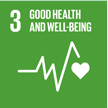 |
3.8 Achieve universal health coverage, including financial risk protection, access to quality essential health-care services and access to safe, effective, quality and affordable essential medicines and vaccines for all. |
1 Popularization of the automated robotic PCR testing system |
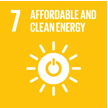 |
7.1 By 2030, ensure universal access to affordable, reliable and modern energy services. 7.2 By 2030, increase substantially the share of renewable energy in the global energy mix 7.3 By 2030, double the global rate of improvement in energy efficiency. 7.a By 2030, enhance international cooperation to facilitate access to clean energy research and technology, including renewable energy, energy efficiency and advanced and cleaner fossil-fuel technology, and promote investment in energy infrastructure and clean energy technology. |
2 Establishment of a clean hydrogen supply chain |
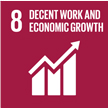 |
8.2 Achieve higher levels of economic productivity through diversification, technological upgrading and innovation, including through a focus on high-value added and labour-intensive sectors. |
1 Popularization of the automated robotic PCR testing system |
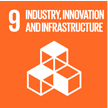 |
9.4 By 2030, upgrade infrastructure and retrofit industries to make them sustainable, with increased resource-use efficiency and greater adoption of clean and environmentally sound technologies and industrial processes, with all countries taking action in accordance with their respective capabilities. 9.5 Enhance scientific research, upgrade the technological capabilities of industrial sectors in all countries, in particular developing countries, including, by 2030, encouraging innovation and substantially increasing the number of research and development workers per 1 million people and public and private research and development spending. |
1 Popularization of the automated robotic PCR testing system 2 Establishment of a clean hydrogen supply chain |
 |
12.2 By 2030, achieve the sustainable management and efficient use of natural resources. 12.4 By 2020, achieve the environmentally sound management of chemicals and all wastes throughout their life cycle, in accordance with agreed international frameworks, and significantly reduce their release to air, water and soil in order to minimize their adverse impacts on human health and the environment. 12.5 By 2030, substantially reduce waste generation through prevention, reduction, recycling and reuse. |
1 Popularization of the automated robotic PCR testing system 2 Establishment of a clean hydrogen supply chain |
 |
13.1 Strengthen resilience and adaptive capacity to climate-related hazards and natural disasters in all countries. |
2 Establishment of a clean hydrogen supply chain |
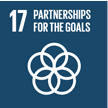 |
17.7 Promote the development, transfer, dissemination and diffusion of environmentally sound technologies to developing countries on favourable terms, including on concessional and preferential terms, as mutually agreed. 17.17 Encourage and promote effective public, public-private and civil society partnerships, building on the experience and resourcing strategies of partnerships. |
1 Popularization of the automated robotic PCR testing system 2 Establishment of a clean hydrogen supply chain |
2. Project Evaluation and Selection Process
The projects were selected by the Company's Finance and Control Division and Sustainable Development Division based on the Group Vision 2030 and the process for identifying material issues (materiality). The final decision on the selected projects will be made after approval by the executive officers in charge of the Finance and Control Division and Sustainable Development Division.
The "Generation of waste material during the development and manufacturing" is assumed as an environmental risk of each project, but we are conducting environmental assessments of all projects in accordance with environmental laws and regulations and the ordinances stipulated by local governments.
3. Management of Funds Raised
After the issuance of the sustainability bonds, it is planned to use the funds raised approximately two months after the issuance. In addition, for the linking of the funds raised to assets, and the management of the appropriation status of the funds raised, tracking and management will be conducted by the Company's finance department by using the company's internal control system. It is planned that the tracking results will be checked by the executive officer in charge of finance on a quarterly basis. The funds raised will be managed as cash or cash equivalents until the funds are appropriated.
For the status of appropriation and the unappropriated funds, in addition to the tracking management in the Company as written above, the balance of the funds will be appropriately managed through internal audits on a semi-annual basis and through accounting audits by an accountant on a quarterly basis.
4. Reporting
i. Reporting on the status of funds appropriation
For the status of the appropriation of funds, the appropriation status will be disclosed on the website once a year until all the funds raised have been appropriated. Even after the completion of the appropriation of funds, if an event that differs from the initial expectations occurs in a project for which funds are used, the event and the status of the occurrence of unappropriated funds will be promptly disclosed on the company website.
ii. Impact reporting
During the period until all the funds raised have been applied to the target project, the following output indicators and outcome indicators, etc., will be published within the scope of confidentiality on the company website once a year as impact reporting for the project.
| Projects | Output indicators | Outcome indicators | |
|---|---|---|---|
| 1-1 | Investment in the development of container-type PCR testing systems |
|
|
| 1-2 | Investment in the manufacturing of container-type PCR testing systems | ||
| 1-3 | Investment in the development of an automated PCR testing platform (Web reservation system, etc.) | ||
| 2-1 | Investment in development and demonstration for the establishment of a clean hydrogen supply chain |
|
|
| 2-2 | Investment in manufacturing for the establishment of a clean hydrogen supply chain |
|
iii. Reporting on Kawasaki operations overall
Ever since the publication of the "Environmental Report" in 1999, the Company has published an annual report on sustainability activities. Since 2013, it has published an integrated report for the purpose of promoting constructive communication about its sustainability and growth potential with its shareholders, investors, and other stakeholders.
- Kawasaki Report (Integrated Report)
https://global.kawasaki.com/en/corp/sustainability/report/index.html
- Kawasaki Environmental Report
https://global.kawasaki.com/en/corp/sustainability/environment/report/index.html
- Kawasaki ESG Data Book
https://global.kawasaki.com/en/corp/sustainability/esgdatabook.html
iv. Reporting on financial status
The Company publishes financial reports on the company website.
- Financial reports
https://global.kawasaki.com/en/corp/ir/library/financial_results.html
v. Reporting on business status
The Company will continue to report output indicators, outcome indicators, impact indicators, and other indicators related to target projects to the extent possible, both quantitatively and qualitatively, and both company-wide and on a project-by-project basis. In fiscal 2020, it will steadily advance each measure through business activities in line with the key themes. In fiscal 2021 and beyond, it will continue to address new management issues and social needs based on the progress made thus far and it will work toward the realization of our Group Mission to be "Kawasaki, working as one for the good of the planet".
Contact
If you need more information about our business,
please feel free to contact us.





